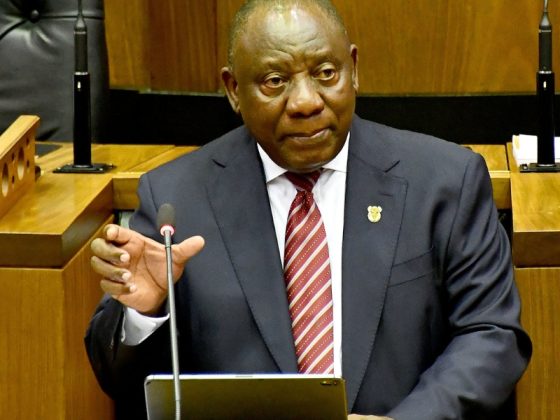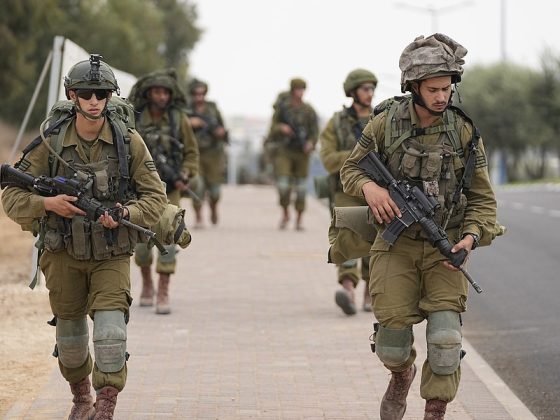
In April, Ukrainian President Volodymyr Zelenskyy’s visit to South Africa marked a significant moment in global diplomacy, as it was the first time the Head of State of Ukraine visited South Africa in the 33 years the two countries established formal diplomatic relations. For President Zelenskyy, the visit formed part of his continued quest to seek new alliances in his push for securing political and economic support in his country’s war with Russia.
During his short visit, Ramaphosa and Zelenskyy discussed expanding bilateral trade, particularly in agriculture, and the possible sale of Ukraine’s increasingly advanced drone technology, a product of wartime innovation since Russia’s full-scale invasion on 24 February 2022.
Why South Africa? Timing and Strategy
Zelenskyy’s choice of South Africa was strategic. His visit followed a disastrous trip to the United States, where President Donald Trump halted the nearly $183 billion in aid previously pledged under President Joe Biden and insisted on direct negotiations between Kyiv and Moscow – a position that both Putin and Zelenskyy had long resisted, with both seemingly preferring to win the war through force.
Adding to Ukraine’s frustration is the North Atlantic Treaty Organisation’s (NATO) continued hesitation to admit the country into its ranks and member states divided on further military aid. Against this backdrop, South Africa’s consistent call for unconditional peace talks has gained new relevance. Ramaphosa reiterated this stance, linking it to South Africa’s own negotiated transition from apartheid to democracy.
Pretoria’s Diplomatic Play
South Africa has maintained a policy of non-alignment throughout the Russia–Ukraine conflict, advocating for diplomacy rather than intervention. In March 2022, it partnered with the United Arab Emirates (UAE) to offer hosting rights for Inter-Parliamentary Union-led peace talks. A year later, Ramaphosa led an African Peace Initiative alongside leaders from Senegal, Comoros, Zambia, Egypt, Congo, and Uganda. Their ten-point plan called for de-escalation, humanitarian corridors, and structured negotiations. While the mission yielded no major breakthroughs, it elevated Africa’s profile in global peacebuilding.
Zelenskyy’s visit may have helped boost South Africa’s symbolic diplomatic clout, especially at a time when ties with Washington have soured. Since the start of the war, Washington has accused Pretoria of supporting Russia, at the expense of Ukraine.
Pretoria and Moscow: Old Friends, New Pressures
South Africa and Russia share a dense web of legal and diplomatic agreements, about 70 in total, covering investment, taxation, energy, mining, and more. These include the 2006 Treaty on Friendship and Partnership and the 2013 Strategic Partnership Declaration signed during the BRICS summit.
However, Pretoria’s attempt to remain neutral faces new strains. While Zelenskyy’s visit might have been expected to antagonise Moscow, both Putin and Ramaphosa emphasised their countries’ continued cooperation. Still, that cooperation is contingent on conditions that remain unacceptable to Ukraine; chief among them, Ukraine’s permanent neutrality and recognition of Russia’s claims over the occupied regions of Donetsk, Luhansk, Zaporizhzhia, and Kherson.
Kyiv has already rubbished these demands, calling the meeting in Istanbul talks a ‘farce’. The question now is whether there will be any follow-up on the talks, given that Russia and Ukraine are miles apart on the key issues on the table. . Zelenskyy has accused Moscow of reacting negatively to Ukraine’s diplomatic outreach in Africa. Nonetheless, he expressed openness to a direct meeting with Putin. The anticipated lower-level talks in Istanbul last week, which resulted in a prisoner exchange and an agreement to share ceasefire proposals is a positive development. During the talks, Ukraine also proposed a summit between leaders – an idea Russia has not ruled out. These talks could prove pivotal in testing whether genuine peace negotiations are feasible.
A Quiet Reset with Washington?
This week Ramaphosa is in Washington for a high-stakes, behind-the-scenes meeting with President Trump – their first direct engagement. The meeting, reportedly brokered by Qatar, followed months of diplomatic tensions. South Africa’s ambassador to the U.S., Ibrahim Rasool, Consul General in Los Angeles (LA), Thandile Babalwa Sunduza, and Brigadier General Richard Maponyane were dismissed earlier this year, and controversy flared after the U.S. granted asylum to 49 Afrikaners claiming persecution.
Business magnate Johan Rupert and Democratic Alliance (DA) leader John Steenhuisen accompanied Ramaphosa. Their presence, especially as prominent white South Africans, signals an effort to push back against right-wing narratives in the U.S. claiming “white genocide” in South Africa.
Tensions had intensified in February when four U.S. Congressmen called on Trump to revoke South Africa’s African Growth and Opportunity Act (AGOA) trade benefits and consider cutting diplomatic ties altogether, accusing Pretoria of undermining U.S. interests.
Ramaphosa’s diplomatic outreach appears aimed at mending these ties and reasserting South Africa’s role in global affairs. With AGOA due to expire, the G20 summit approaching, and tariffs under review, restoring dialogue with Washington is a strategic necessity.
Domestic Backlash and Political Fractures
Despite Ramaphosa’s outward-facing diplomacy, his government remains bound by the African National Congress’s (ANC) ideological tilt toward a multipolar world order—one that elevates China and Russia while challenging Western hegemony.
Opposition parties like the Economic Freedom Fighters (EFF) and the uMkhonto weSizwe Party (MKP) fiercely opposed Zelenskyy’s visit. The EFF criticised the move as a distraction from domestic crises and an alignment with NATO, while the MKP and South African Communist Party (SACP) called Zelenskyy a “puppet” and said the visit compromised South Africa’s neutrality.
These voices reflect a broader internal debate about South Africa’s foreign policy direction and its impact on national credibility.
What Comes Next?
The Ramaphosa–Trump call before Zelenskyy’s arrival may have opened a narrow window for resetting bilateral ties. With the U.S. boycotting several G20 meetings hosted by South Africa – most notably by Treasury Secretary Scott Bessent and Secretary of State Marc Rubio – there is growing concern about Washington’s disengagement, especially after Trump cast doubts on his participation in the G20 summit in South Africa later this year.
This does matter. South Africa holds the G20 presidency, which it will pass to the U.S. in 2026. High-level engagements now could shape cooperation on global issues like trade, climate, and security. But unresolved disputes linger. Trump has been critical of South Africa’s land expropriation policies, even offering asylum to white farmers, further straining relations.
Talks between Ramaphosa and Trump will be critical in determining the trajectory of U.S.–South Africa relations. Both sides must weigh the geopolitical cost of isolation against the benefits of pragmatic engagement.
All in all, Ramaphosa is determined to restore South Africa’s diplomatic standing in global affairs. However, the country’s ICJ case against Israel will continue being a stumbling block to fully restoring relations with the US and some of its European allies.



